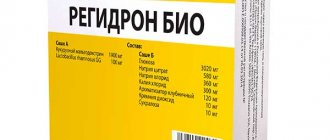Sometimes the poop can be so large that going to the toilet turns into hellish torment. Every millimeter of such poop brings with it severe pain that some people compare it to childbirth. In addition, too thick stool sometimes damages the anus and is followed by bleeding. Sometimes one bowel movement has to be divided into several stages, gradually defecating another portion of feces with each visit to the toilet. In this article, we will look at why stool becomes so large and what measures should be taken to avoid the appearance of thick poop.
Types of steatorrhea
With steatorrhea, sudden weight loss is observed
The disease was classified into:
- Alimentary (food). At the same time, patients consume excessive amounts of fat, which even a healthy body cannot digest.
- Intestinal. The affected mucosa lining the small intestines does not absorb fats.
- Pancreatic. With a poorly functioning pancreas, lipase, an enzyme that breaks down fat, is synthesized in deficiency.
In addition, steatorrhea is divided into 3 more types:
- First type: feces include neutral fat.
- The second type: fatty acids and soaps are found in the stool.
- Third type: a combination of 1 and 2 types.
Causes of thick poop
As mentioned above, large stool masses are all signs of constipation. There are many reasons for constipation and they are not always obvious.
The most common reasons for large poops are:
- Dysbacteriosis;
- Poor nutrition and eating dry food;
- Sedentary lifestyle;
- Frequent stress;
- Taking medications that cause constipation;
- Impaired intestinal motility.
Please note that there is no need to self-medicate. It's better to see a doctor, there's nothing shameful in that.
Causes of steatorrhea
The disease usually occurs due to impaired digestion or absorption of fats. Accelerated evacuation of feces is a rarer cause of the disease. It can occur due to laxative abuse.
The disease is provoked by pathologies inherent in the small intestine, pancreas, and liver. A frequent culprit of the disease is chronic pancreatitis, especially provoked by alcoholism. The presence of cardiospasm causes steatorrhea in exceptional cases. Stagnation of bile, which promotes the emulsification of fats and their absorption, leads to steatorrhea (light-colored stools).
Signs and symptoms
A sharp urge to go to the toilet is one of the signs of steatorrhea
The stool is usually loose, copious and quite frequent. However, steatorrhea may well be accompanied by constipation. Any form of oily bowel movement is characterized by the formation of a poorly washed off stain with a greasy sheen in the toilet bowl. The color of the stool can be normal, light or grayish.
Patients suffer from dizziness, bloating and rumbling in the intestines that occur in the upper abdomen, constant drying of the mucous membranes of the mouth and nose, lethargy, and decreased performance. They suffer from a dry cough, frequent frequent loose bowel movements, and pain that occurs at the ends of the long bones. They are worried about pain in the spine and joints.
People burdened with steatorrhea rapidly lose weight and become exhausted.
In patients, the subcutaneous fat tissue is underdeveloped, the skin is dry, flaky, and often affected by polymorphic erythema. They have dry and pale lips, cracks in the corners of the mouth. The oral cavity shows signs of stomatitis, the tongue is brightly colored, sometimes with atrophied papillae, the gums are loose and bleeding.
Pancreatic insufficiency in children
The first decade of the 21st century was marked by the progress of pediatric gastroenterology, which led to significant advances in the diagnosis, treatment and prevention of digestive diseases in children.
However, despite significant advances in this area, chronic diseases of the digestive system are the most common pathology occurring in both adults and children. The structure of diseases of the child population is dominated by chronic inflammatory diseases of the upper digestive organs (esophagitis, gastritis, duodenitis, duodenal ulcer). The results of epidemiological studies conducted in our country showed the widespread prevalence of these diseases in all regions of Russia, especially in areas with high levels of anthropogenic pollution. In childhood, almost all diseases that gastroenterologists encounter in the future occur. The significance of this pathology is due not only to its widespread prevalence, but also to socio-economic aspects, namely: long-term disability in adult patients, high risk of malignancy in inflammatory diseases of the gastrointestinal tract. That is why finding out the reasons for the increase in the frequency of these diseases, deciphering the pathogenesis, improving diagnostic methods and developing principles of rational treatment are among the priority scientific tasks of gastroenterology.
One of the leading places among diseases of the digestive organs is occupied by lesions of the pancreas, which are distinguished by their diversity and polyetiology. However, despite the wide variety of causative factors, the clinical picture of various conditions associated with impaired functioning of this organ is largely similar.
The pancreas, surrounded on all sides by various organs, is located in the very center of the abdominal cavity. Moreover, part of it is located retroperitoneally, which explains the features of the clinical picture when it is affected. Golubev A.A. very accurately compared the pancreas with a sleeping wild animal: “Like a gentle panther, she laid her head in the bend of the duodenum, spread out her thin body on the aorta, which lulled her with measured movements, and carelessly deflected her slightly curved tail into the gate of the spleen - hidden a beautiful predator, which unexpectedly, when sick, can cause irreparable harm: such is the pancreas - beautiful, like a heavenly angel, like a demon, insidious and evil.”
A significant proportion of patients with pancreatic lesions are elderly and elderly people, but recently pancreatic lesions are becoming increasingly common in children of all ages.
A disruption of the pancreas, which is not usually accompanied by an inflammatory reaction, but has certain clinical symptoms, is called pancreatic insufficiency.
There are primary and secondary pancreatic insufficiency. Primary pancreatic insufficiency develops due to the influence of so-called non-modifiable factors, which a person (patient or doctor) cannot influence and influence. These include diseases such as cystic fibrosis of the pancreas, congenital obstruction of the pancreatic duct, Shwachman syndrome, isolated lipase deficiency, isolated trypsin deficiency, hereditary recurrent pancreatitis.
In pediatric practice, secondary or relative pancreatic insufficiency (previously called pancreatopathy, dyspancreatism) is more common, usually caused by the intake of unusual food, its excess amount, or temporary disorders of the functioning of the pancreas. Secondary pancreatic insufficiency can accompany various inflammatory diseases of the VOPT.
Clinical manifestations of pancreatic insufficiency are signs of disruption of the pancreas - abdominal pain, changes in appetite (decrease or complete disappearance), nausea, rumbling in the abdomen, flatulence and flatulence, steatorrhea. The intensity and severity of these signs depends on the degree of damage to the pancreas.
Diagnosis of secondary pancreatic insufficiency in children can often present significant difficulties due to the vagueness of clinical symptoms and minor changes in instrumental research methods. Therefore, for correct diagnosis and timely prescription of adequate treatment, the doctor must use the entire arsenal of tools at his disposal. With pancreatic insufficiency, pain is localized in the epigastrium, left hypochondrium, or can be encircling, radiating to the left hypochondrium, under the left shoulder blade, or in the back. The pain can be paroxysmal and constant; it intensifies after overeating, consuming fatty, spicy and fried foods, and alcohol. Heat increases the pain, the use of cold reduces it somewhat. The pain is difficult to relieve with medications. The pain eases somewhat when the patient is forced into a knee-elbow position, sitting, bent forward, lying on his side with his knees pulled to his chest. The pain syndrome is usually accompanied by symptoms of intestinal dyspepsia and stool disorders, while patients complain of bloating and rumbling in the abdomen, diarrhea may be replaced by constipation. The stool during diarrhea is copious, liquid, foamy, light yellow in color due to the large amount of fat. Signs of gastric dyspepsia are also characteristic - nausea and vomiting, which does not bring relief.
It is impossible to diagnose disorders of the pancreas and pancreatic insufficiency in particular only on the basis of clinical examination methods. A gastroenterologist has a number of instrumental methods at his disposal to assess the condition of the pancreas.
The most informative method for studying the exocrine function of the pancreas is to determine indicators of pancreatic secretion under basal conditions and after the introduction of various stimuli in the duodenal contents, which is obtained using a two-channel probe. Stimulators of pancreatic secretion are 0.5% hydrochloric acid solution, vegetable oil, glucose, Proserin and intestinal hormones - secretin and pancreozymin.
Normally, after the introduction of stimulants, pancreatic secretion and enzyme activity increase 2–3 times, and in case of insufficiency of pancreatic function they remain stable.
Ultrasonography. Ultrasound reveals a diffuse or local increase in the size of the gland, a change in the echo density of the parenchyma in the form of hyperechogenicity, possibly alternating areas of hyper- and hypoechogenicity, and uneven contours. Cystic formations may be detected.
Tomography (computer, magnetic resonance). A highly effective instrumental method that allows you to identify changes in the size and structure of the pancreas, the presence of cysts, foci of necrosis and calcification.
The gold standard for instrumental diagnosis of pancreatic diseases is endoscopic retrograde cholangiopancreatography. However, this technique has a number of contraindications, often provokes an exacerbation of pancreatitis and is carried out only in specialized clinics.
Verification of the diagnosis and a reliable assessment of the condition of the pancreas can only be carried out based on the results of specific tests and analyzes that determine the functional characteristics of the pancreas and its disorders. There are a large number of different tests for determining the condition of the pancreas; the following tests are of greatest clinical interest.
Provocative tests
These tests have still not lost their relevance and may well be used in clinical practice when assessing the condition of the pancreas. Tests are carried out using drugs that stimulate the activity of the pancreas - secretin, pancreozymin, neostigmine methyl sulfate (Proserin), glucose.
Proserine test - determination of amylase content in urine after stimulation of the pancreas with Proserine. In the morning, on an empty stomach, the first portion of urine is collected from the patient. After this, a 0.05% solution of Prozerin is administered subcutaneously at the rate of 0.1 ml of a 0.05% solution per year of the child’s life, and after 10 years - 1 ml per injection. Urine is collected every 30 minutes into separate vessels for 2 hours. The amylase level is determined in portions. In healthy people, it is 12–64 mg/ml/hour, while urine amylase after administration of Proserin increases, reaching a maximum after an hour, then decreases to the original level by the end of the second hour. The enzyme concentration can increase no more than twice the initial value .
The glucose test (double load with glucose) involves recording amylase levels when glucose is administered to stimulate the production of pancreatic juice. Before the study, foods rich in fat are excluded from the child’s diet for 3–5 days. On the day of the study, the child takes a 10% glucose solution on an empty stomach at the rate of 1 g/kg body weight, but not more than 50 g per dose. Repeated administration of the same dose of glucose solution is carried out after an hour. Amylase levels are checked on an empty stomach and every 30 minutes after a glucose load for 2–3 hours.
In the presence of inflammatory changes in the pancreas after the first or second glucose load, hyperamylasemia is noted, while the amylase level gradually decreases towards the end of the study. A decrease in amylase levels after glucose loads is evidence of depletion of the functionality of the pancreas.
Study of the exocrine function of the pancreas by indirect methods
Coproscopy is a visual examination of stool. In patients with impaired pancreatic function, stool contains a large amount of fat, so it is “shiny,” viscous, dirty—“sticks to the pot.” Microscopically, an increased content of neutral fat in the feces is determined.
X-ray film test is an indicative method for determining trypsin activity in feces. With normal proteolytic activity, feces applied to x-ray film cause spots to appear on its surface - “clearances”. The absence of clearing on the surface of the film in low dilutions (1:20 or less) indicates pancreatic insufficiency.
Yodlipol test. The principle of the method is that when taken orally, iodolipol, consisting of a fatty substance (lipol) and iodine, under the action of pancreatic lipase is converted into free iodine, which is excreted in the urine. The concentration of iodine in urine is used to determine the activity of pancreatic lipase. In case of pancreatic lipase deficiency, iodine is not detected in the urine or is recorded only in a 1:2 dilution.
Biochemical tests of blood, urine, feces
When performing these tests, the activity of some enzymes produced by the pancreas is determined - amylase, lipase, phospholipase A2, trypsin, elastase.
The most traditional test is to determine the level of amylase in the blood serum, which in healthy people is 12–32 mg/ml/hour. With exacerbation of chronic pancreatitis, these indicators increase by 1.5–3 times. However, in some patients this increase is short-term and therefore not always determined at the time of the study. The normal lipase content is 0.2–0.4 ml (according to Scotz), trypsin 98.2–229.6 ng/ml [1]. However, the level of amylase is not a specific marker of damage to the pancreas, as it can increase in diseases of other organs and systems.
In case of acute damage to the pancreas, the level of amylase in the blood serum reaches a maximum after approximately 12 hours.
The gold standard for assessing the condition of the pancreas is the secretin-pancreozymine test (SPT). In this case, the level of bicarbonates and enzymes is determined after intravenous administration of secretin and pancreozymin (direct stimulation of the pancreas). With a normally functioning organ, the level of determined indicators is:
- the maximum amount of bicarbonates is not less than 70 mmol/l;
- amylase not less than 12,000 U/30 min;
- trypsin at least 3 U/30 min;
- lipase not less than 65,000 U/30 min;
- steatorrhea no more than 7 g/day.
In addition, to assess the condition of the pancreas, especially for diagnosing severe conditions (cystic fibrosis), the serum pancreolauryl test (PLT) - indirect stimulation of the pancreas - is used. At which the level of cholesterol esterase should be at least 4.5 μg/ml.
For severe pancreatic lesions, the fecal chymotrypsin test (FCT) may be used. However, it has a number of disadvantages - low sensitivity (positive only in cases of pronounced changes in the condition of the pancreas), technical complexity of diagnostics (chymotrypsin is destroyed during passage through the intestines), possible cross-reactivity with enzyme preparations (the test requires refusal of enzyme therapy for at least 72 hours). With a positive test, the level of chymotrypsin in the stool decreases below 3 U/g.
The most promising test at present for determining the condition of the pancreas can be considered studies to determine elastase. Currently, doctors have serum and fecal elastase tests in their arsenal.
The serum elastase test (SET) has a sensitivity of 96% and a specificity of 96%. This test is especially sensitive for detecting acute pancreatitis (the “gold standard”) or exacerbation of chronic pancreatitis. During the study, the normal level of elastase I in the blood serum does not exceed 3.5 ng/ml. If organ function is impaired, it becomes above 35 ng/ml.
This test can be used to diagnose acute pancreatitis (even a few days after the clinical manifestation of the attack), after retrograde cholangiopancreatography (RPCP) (even in the absence of clinical signs of pancreatitis).
Recently, the new fecal elastase test (FET) has deservedly gained increasing popularity. Its sensitivity is 100% and specificity is 96%.
Ease of execution, preservation of elastase activity during passage through the intestines, absence of cross-reactions with enzyme preparations, and the possibility of use in children of any age make this test a leading place among all diagnostics for determining the condition of the pancreas. In addition, stool samples are stable at 20°C for 7 days and at 4°C for up to 30 days.
The normal level of elastase in feces should not decrease less than 200 mcg/g. An elastase level of 200 to 100 mg/g is assessed as moderate pancreatic insufficiency. If the level of elastase I in feces decreases to less than 100 mcg/g, then the patient has severe pancreatic insufficiency.
This test can be used to screen and monitor pancreatic insufficiency in children.
Thus, for successful timely diagnosis of pancreatic diseases, it is necessary to use a whole range of studies, including, along with careful clinical observations of a sick child, a number of functional and instrumental methods that make it possible to most fully study the extent of damage to the pancreas in order to prescribe adequate complex therapy.
For pancreatic insufficiency, various medications containing enzymes are used. Traditionally, pancreatin is used for this, a drug prepared from animal pancreas [3]. However, under conditions of intense acid formation in the stomach, its partial inactivation occurred, and the drug did not have the expected therapeutic effect. Subsequently, with the development of the pharmaceutical industry and knowledge about the mechanism of digestive processes, new forms of drugs appeared containing pancreatin in the form of tablets, dragees, granules with a protective shell and microspheres placed in a capsule. Currently, enzyme preparations used in clinical practice must meet certain requirements: 1) non-toxicity, 2) good tolerability, 3) absence of significant adverse reactions, 4) optimal action in the pH range 5–7, 5) resistance to hydrochloric acid. , pepsins and other proteases, 6) contain a sufficient amount of active digestive enzymes, 7) have a long shelf life [2].
Depending on their composition, enzyme preparations can be divided into several groups [4]:
- Extracts of the gastric mucosa, the main active ingredient of which is pepsin (Abomin, Acidin-pepsin, Pepsidil, Pepsin).
- Pancreatic enzymes, represented by amylase, lipase and trypsin (Pancreatin, Creon Pancitrate, Mezim forte, Triferment, Pangrol, Prolipase, Pankurmen, etc.).
- Enzymes containing pancreatin, bile components, hemicellulose (Digestal, Kadistal, Festal, Cotazim forte, Menzym, Panstal, Rustal, Enzistal).
- Combined enzymes: 4.1. Combicin is a combination of pancreatin and rice fungus extract. 4.2. Panzinorm forte is a combination of lipase, amylase, trypsin, chymotrypsin and cholic acid, amino acid hydrochlorides. 4.3. Pankreoflat is a combination of pancreatin and dimethicone.
- Enzymes containing lactase (tilactase (Lactrase)).
All of these drugs contain pancreatic enzymes, but they are not interchangeable. Various groups of these drugs have clear and strict indications for use. If these indications and rules of administration are violated, you may not only fail to achieve the desired result, but also cause various adverse reactions.
The first group of enzymes is aimed mainly at compensating for disturbances in the activity of the gastric mucosa. The pepsin, cathepsin, and peptidases contained in their composition break down almost all natural proteins. These drugs are used primarily for hypoacid gastritis. These drugs should not be prescribed for diseases associated with increased acid formation: peptic ulcers, gastritis associated with H. pylori, since the histamine released under their influence can be antagonized by drugs included in the standard treatment regimens for these diseases.
Most of the drugs included in the group of pancreatic enzymes and primarily regulating the function of the pancreas are used both for therapeutic purposes in cases of significant disturbances in the digestion process and the formation of pancreatic juice, and for preventive treatment.
Even within the same group, drugs differ in the quantitative composition of their components. Also, the progress of enzyme preparations is in the direction of reducing the size of the dosage form of drugs.
The myth about the preference for choosing a drug for replacement therapy has been practically dispelled in recent years - everyone and everywhere is talking about the need to prescribe 4th generation drugs (enteric minimicrospheres or microtablets). Unfortunately, as replacement therapy, doctors often prescribe pancreatin tablets from various manufacturers, often even combined with bile components or stomach enzymes. As noted above, due to their large size, pancreatin tablets do not penetrate into the duodenum at the same time as chyme and take less part in hydrolysis. Additional components included in these drugs often reduce or completely negate the therapeutic effectiveness of the enzyme drug in this case. Another reason explaining their practical unsuitability for replacement therapy is the low concentration of active substances and, first of all, lipase in one tablet, which determines the need to use more tablets per meal, and this does not take into account the fact that the drug is partially inactivated in the stomach when a large tablet “breaks apart”, so the potential dose should be even higher [3]. Secondary pancreatic insufficiency can easily occur when the microelement and salt composition of food or water changes. And in this case, light, “preventive” enzyme preparations will have their effect. However, enzymes containing the active principle in small quantities are available in the form of tablets, the use of which is limited in children of different ages. The tablets are covered with a special acid-resistant coating, when destroyed (during crushing) the drug is quickly inactivated in the stomach. Therefore, dividing tablets for use in children of different ages is completely useless.
A way out of this situation exists in the form of a group of highly active enzyme preparations, such as Creon, Pancitrate, the concentration of lipase in which reaches 10,000–40,000 units. All these drugs are capsules containing mini-tablets or mini-microspheres [6, 7].
Only Creon capsules can be opened and their contents divided according to the body weight of each individual child. It should be borne in mind that mini-tablets of some drugs (Panzinorm 1000, Ermital) are coated with a special acid-resistant coating containing methacrylic acid copolymers, which, according to some data, can cause the development of fibrous colonopathy with long-term use of drugs [5, 8].
Creon®, available in three forms, with lipase activity of 10,000 units, 25,000 units and 40,000 units, was first synthesized specifically for the treatment of cystic fibrosis. It should be noted that, unlike other “therapeutic” drugs, Creon, even with long-term use, does not cause a decrease in the function of the native pancreas. Being in capsules in the form of mini-microspheres, Creon can be easily dosed for children of different ages by first pouring the contents of the capsule onto checkered paper. As recommended by Littlewood JM et al. for every 120 ml of formula, it is recommended to prescribe 1/4–1/2 capsules of Creon 10,000. For older children, 1–2 capsules of Creon 10,000 are usually prescribed with meals and 1/2 capsule for a snack. When prescribing any enzyme preparation, it must be taken into account that the daily dose should not exceed 10,000 IU of lipase per 1 kg of body weight. An important difference between the drug Creon is the size of the mini-microspheres; they are significantly smaller in diameter when compared with traditional capsules containing mini-tablets or pills, which makes them easier to swallow in young children. If the child cannot swallow the entire capsule of the drug, its contents can be poured directly into a spoon at the beginning of the meal. Minimicrospheres, coated with a special shell, have a diameter of no more than 1.2 mm, and are actively mixed with chyme, which ensures fast and complete digestion.
Thus, each group of enzyme preparations has its own, strictly limited indications for use. The use and prescription of drugs according to indications, within this framework, helps to normalize digestive processes and improve the patient’s condition. Incorrect use of various groups of enzymes contributes to the discreditation of these drugs, the lack of a positive effect, or even the deterioration of the patient's condition.
However, it is not always sufficient to prescribe enzyme preparations to correct the resulting pancreatic insufficiency. One of the likely factors for damage to the pancreas are instrumental studies and manipulations performed on the biliary tract and papilla of Vater. Both irritation of the papilla of Vater and its subsequent swelling, as well as accidental or intentional contrasting of the pancreatic ducts during retrograde cholangiopancreatography can cause stagnation and disruption of the outflow of pancreatic juice. As a result of the overflow of the pancreas, severe abdominal pain appears. Excessive amounts of enzymes can lead to autolysis of pancreatic tissue and, ultimately, to the development of pancreatic necrosis. In addition, excess acid production by the gastric mucosa (which is often observed in children and can be exacerbated by inflammatory conditions, such as those accompanying helicobacteriosis) leads to acidification of the duodenum, stimulates the formation of secretin and cholecystokinin, which ultimately leads to an increase in pancreatic enzymes produced by the pancreas. The overflow of gland tissues with enzymes enhances the processes of autolysis. Due to the high risk of developing complications from the pancreas, RCCP in children is limited and is performed only in a few clinics.
In this regard, we carried out work at the Research Institute of Pediatrics of the Scientific Center for Children's Health of the Russian Academy of Medical Sciences, during which the tasks were set to identify groups at risk of developing adverse reactions during RCCP, to develop tactics for the clinical management of children in the period of preparation for the study and schemes for their management in post-manipulation period for the purpose of speedy rehabilitation.
The study included 68 people aged from three to 15 years entering the clinic for RCCP (table).
In 56 children (82.4%) suffering from cholelithiasis, hospitalization in a hospital was due to the need to conduct a diagnostic study to determine treatment tactics and the extent of surgical intervention. 12 children (17.6%) were hospitalized in the hospital to clarify the diagnosis and carry out differential diagnosis between anomalies of the biliary tract and cholelithiasis.
The preparation of children for the study, as well as their management in the post-manipulation period, was carried out according to two schemes. Throughout the entire duration of the study, children were randomly included in one of two groups, depending on the management regimen.
The first group of children (30 people) was treated according to the scheme traditionally used in pediatric practice: in the pre-manipulation period, children were not prepared for the study; in the post-manipulation period, the volume of drug therapy was minimal and included intravenous administration of antienzyme drugs (Contrical - 500 IU/kg) twice a day. In the case of the development of pain and dyspeptic syndromes, symptomatic therapy was carried out: painkillers (Baralgin, glucozone-caine mixture), prokinetics (Cerucal) and detoxification therapy (Hemodez). The frequency and duration of therapy was determined by the severity of the course and the severity of complications.
Preparation for ERCP in children of the second group (38 people) was significantly expanded and included the prescription of a “pancreatic” diet (diet No. 5p) and complex drug therapy (antispasmodics No-shpa, 2 tablets 3 times a day, enzyme preparations - Creon 800 IU/kg, proton pump inhibitors - Losek-Maps, Nexium 1 mg/kg) 3 days before the study. Since we used proton pump inhibitors in the form of MUPS tablets, we were able to crush the drug and, thus, dose it quite accurately. 4 hours before the manipulation, intravenous drip administration of antienzyme drugs was carried out.
The effectiveness of the management regimens used was assessed by the severity of the clinical picture (complaints, severity of pain, presence of dyspeptic symptoms), as well as by laboratory parameters and ultrasound examination.
Clinical manifestations of complications (dyspeptic symptoms, pain syndrome in combination with dyspeptic symptoms) in the first group occurred in more than half of the children (65.0%), in the second - only 1/3 of the children had adverse reactions with mild clinical symptoms.
An analysis of the reasons that caused the development of adverse reactions showed that the largest number of them was in children who, at the time of admission, already had ultrasound signs of pancreatic edema and/or in whom, during RCCP, the Wirsung duct was filled with a contrast agent, followed by obtaining pancreaticograms.
Thus, a correctly conducted comprehensive examination allows, already at the initial stage of diagnosis, to identify a group of children who are at risk of developing complications after RCCP. If pancreaticograms are obtained during the study, these children may also be classified as at risk for the development of adverse reactions. Adequate preparation of children for the study, as well as complex therapy in the post-manipulation period, can significantly reduce the risk of complications after RCCP, reduce the severity of their course and significantly improve their quality of life.
Literature
- Chulchina T. N., Popov V. G., Knyazev Yu. A. Methodological recommendations for laboratory diagnostic methods. M., 1998. 43 p.
- Zlatkina A. R., Belousova E. A., Nikitina N. V., Siliverstova T. R. // Modern therapy of chronic pancreatitis. 2nd Gastr. a week. 1996. Separate. release. S. 4.
- Brawn A., Hughes M., Tennor S., Banks PA Does pancreatic enzyme supplementation reduce pain in patients with chronic pancreatitis: A meta-analysis // Am. J. Gastroenterol. 1997. 92/11. P. 2032–2035.
- Graham DY Enzyme replacement therapy of exocrine insufficiency in man. Relation between in-vitro potency in commercial pancreatic extracts // N. Engl. J. Med. 1977. 296. P. 1314–1317.
- Langman MJS Adverse effects of drugs on the small and large intestine // Prescr. J. 1997. 34/4. P. 187–192.
- Layer P. et al. Enzyme pellet size and luminal nutrient digestion in pancreatic insufficiency // Digestion. 1992. 52: 100.
- Norregard P. et al. Gastric emptying of pancreatin granules and dietary lipids in pancreatic insufficiency. Aliment Pharmacol Ther. 1996. 10: 427–432.
- Prescott P., Bakowski M. T. Pathogenesis of fibrosing colonopathy: the role ofmethacrylic acid copolymer // Pharmacoepidemiol Drug Safety. 1999, 8: 377–384.
P. L. Shcherbakov *, Doctor of Medical Sciences, Professor A. S. Potapov **, Doctor of Medical Sciences, Professor
*Central Research Institute of Gastroenterology, **NCD RAMS, Russian State Medical University, Moscow
Contact information for authors for correspondence
Diagnostics
Steatorrhea requires treatment!
Examining the stool reveals its obvious oiliness. In most cases, the consistency of stool is liquid and the color is light. Laboratory analysis reveals excess fats, soaps and fatty acids.
Steatorrhea is diagnosed if 7 g of fat is excreted in the feces per day.
The exact origin of the disease is determined using radioisotope research, indicating the cause of the disorder, which is associated with the breakdown or absorption of fats.
The fat loading method allows you to exclude pancreatic diseases, which means worsening of the digestion processes, or intestinal diseases that result in poor absorption.
Complications caused by steatorrhea
The disease is accompanied by certain complications. In the intestine, malabsorption of nutrients occurs, resulting in:
- Protein deficiency (the process is associated with a lack of protein).
- Hypovitaminosis, provoked by a deficiency of vitamins (in particular, fat-soluble ones).
- Weight loss before the onset of cachexia, a disease accompanied by profound exhaustion and weakness of the body.
- Water-salt imbalance, expressed by an incessant feeling of thirst, swelling, dehydration (dry skin and mucous membranes), convulsive conditions (involuntary paroxysmal muscle contractions).
- Oxaluria - excessive excretion of oxalic acid salts and the presence of oxalates - insoluble stones that lead to blockage of the kidneys and urinary tract. During normal processes, such stones (essentially insoluble salts of oxalic acid and calcium) are not able to penetrate from the intestines into the bloodstream. Steatorrhea allows calcium to react with fats and leave the body, and oxalates to enter the blood in excess.
- Organ damage. The kidneys, heart, respiratory system, and brain suffer.
- Problems of a psychological nature. Sleep is disrupted, the quality of work drops, and communication becomes difficult.
Timely treatment with the right therapeutic approach helps to avoid such consequences.
Symptoms
Signs of the disease develop gradually. At first, the state of health worsens after errors in the diet (eating fatty foods), then the complaints become constant.
- Change in stool character. The feces acquire a grayish tint and shine, and a whitish film-like coating appears on the surface. Their consistency becomes ointment-like or mushy, with lumps of undigested food. A typical sign is hard-to-wash marks on the walls of the toilet.
- Frequency of bowel movements up to 3-6 times a day.
- Stitching or cramping pain in the abdomen of uncertain localization.
- Bloating and rumbling in the stomach are signs of increased gas formation and an increase in the amount of intestinal contents.
- Loss of body weight. When pancreatic function is impaired, the production of not only lipase, but also enzymes that break down carbohydrates and proteins, decreases. The body does not receive vital substances, so a person loses weight, children experience growth retardation
- Signs of deficiency of microelements and fat-soluble vitamins. Lack of vitamin K leads to increased bleeding, vitamin E to muscle weakness, vitamin A to vision impairment, vitamin D to the development of rickets in children and osteoporosis in adults. Impaired iron absorption leads to anemia.
Treatment
Prescribe drugs with increased concentrations of lipase
It is necessary to treat not steatorrhea, but the disease that led to it. The doctor prescribes drugs with increased concentrations of lipase. The medicines are covered with a coating that prevents enzymes from being destroyed by gastric juice. Patients are prescribed Pancitrate, Creon and Pancreatin.
In addition, treatment with antacids is prescribed: almagel, maalox, phosphalugel, gastal, which neutralize stomach acid. Thanks to them, enzyme therapy is more effective.
In addition, it is advisable to prescribe hydrochloric acid, cortisone and adrenocorticotropic hormone (while controlling the release of 17-ketosteroids, supported by a diet rich in complete proteins).
It is recommended to follow a diet enriched with complete proteins. Vitamin therapy is required. Fat-soluble vitamins (A, D, E, K) and those belonging to group B are prescribed. Particular attention is paid to replenishing vitamins B12 and B15. Therapy is carried out with nicotinic and ascorbic acid. Petechial rash is an indication for taking vitamins P and K.
Dietary food is prescribed. Milk, low-fat meats, fish and cottage cheese are introduced into the diet of patients. Meat and fish are served boiled. Low-fat fish broths and meat broths are well absorbed, so they are given to patients without fail. In addition, they enhance the shimmer of the villi and promote better digestion of food.
Why is “normal” constipation dangerous?
Stool retention is not so harmless. Constipation is the cause of many health problems:
- Hemorrhoids worsen, anal fissures appear, and the risk of rectal prolapse is increased - in 7 out of every 10 patients.
- A dysfunction appears - irritable bowel syndrome.
- There are predisposing factors to the development of colitis and allergies.
- The body does not receive the necessary vitamins and minerals.
- The patient becomes irritable, suffers from depression and neurosis.
- Chronic fatigue syndrome is a common concern.
Those who suffer from constipation are at increased risk of:
- diverticulosis of the colon (protrusion and thinning of the intestinal wall) and its complications, up to intestinal perforation and peritonitis - in every fifth
- Intestinal polyps are found in every tenth person
- Colon and rectal cancer affects every 20th person.
Do not take it to extremes - treat constipation in a timely manner.









